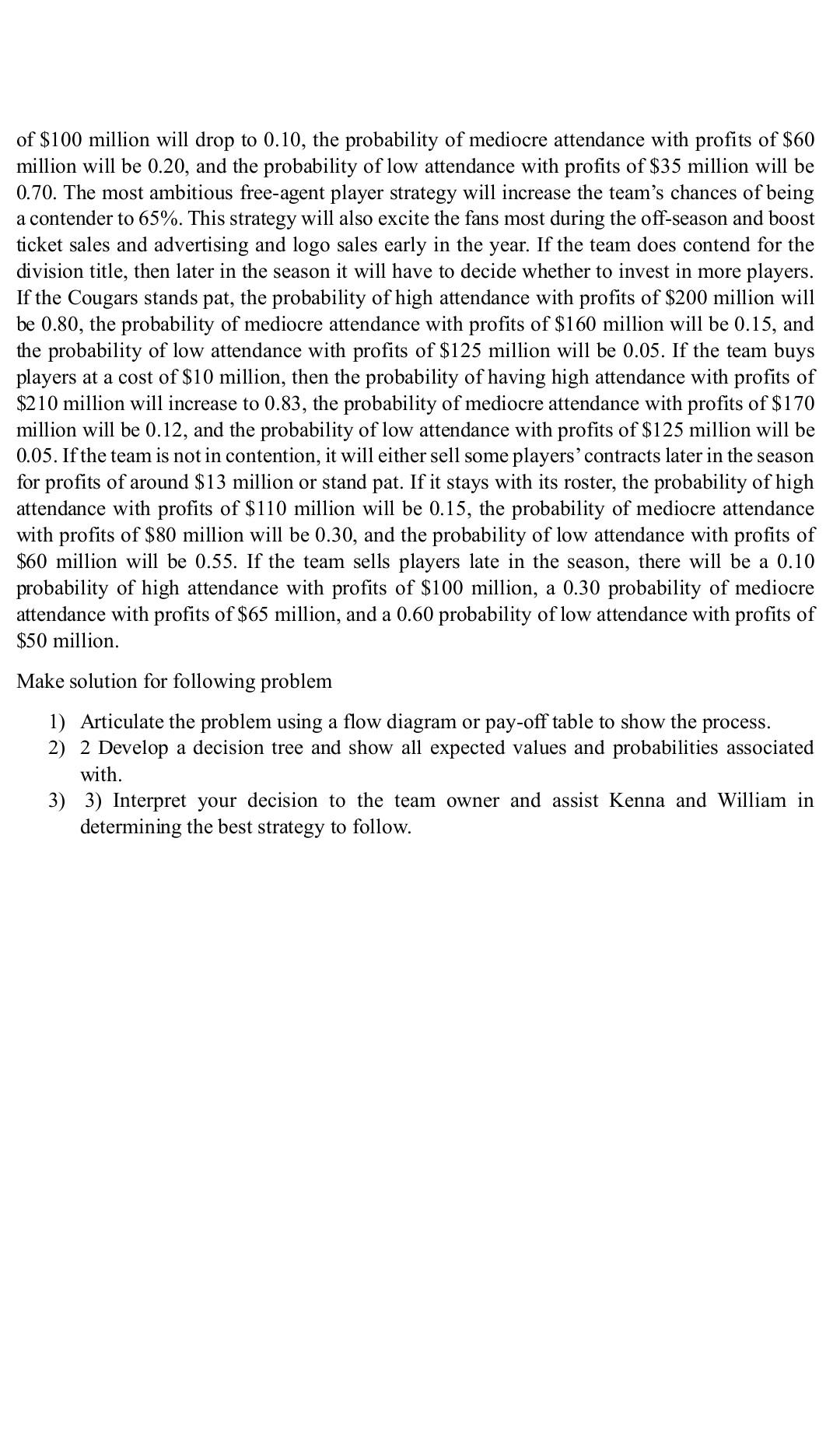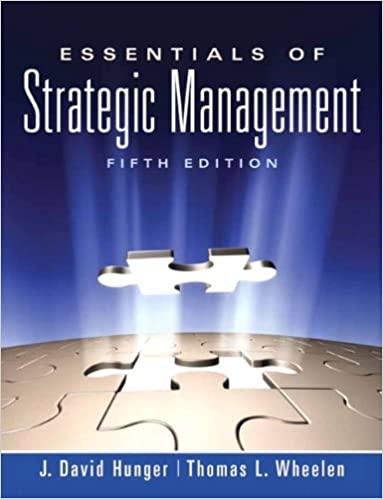Answered step by step
Verified Expert Solution
Question
1 Approved Answer
The California Cougars is a major league baseball team beginning its fifth year of operation. The team had losing records in each of its first


The California Cougars is a major league baseball team beginning its fifth year of operation. The team had losing records in each of its first 4 years and finished near the bottom of its division. However, the team was young and generally competitive. The team's general manager, Phil Wales, believes that with a few additional good players, the Cougars can become a contender for the division title and perhaps even for the pennant. They have prepared several proposals for freeagent acquisitions to present to the team's owner, Wales Sports California. Under one proposal, the team would sign several good available free agent players, including two pitchers, a good fielding shortstop, and two power-hitting outfielders for $52 million in bonuses and annual salary. The second proposal is less ambitious, costing \$25 million to sign a relief pitcher, a solid, good-hitting infielder, and one power-hitting out-fielder. The final proposal would be to maintain the current team and continue to develop. The general manager, Phil Wales, wants to lay out a possible season scenario for the owner so he can assess the longrun ramifications of each decision strategy. Because the only thing the owner understands is money. Phil Wales wants this analysis to be quantitative, indicating the money to be made or lost from each strategy. To help develop this analysis, he has hired two new staff, Kenna and William, to undertake the task. Kenna and William analysed the league data for the previous six seasons for attendance trends, logo sales (i.e. clothing, souvenirs, hats, etc.), player sales and trades, and revenues. In addition, they interviewed several other owners, general managers, and league officials. They also analysed the free agent players that the team was considering signing. Based on their analysis, Kenna and William feel that if California Cougars does not invest in any free agent players, the team will have a 25% chance of contending for the division title and a 75% chance of being out of contention most of the season. If the team is a contender, there is a 0.70 probability that attendance will increase as the season progresses and the team will have high attendance levels (between 1.5 million and 2.0 million) with profits of $170 million from ticket sales, concessions, advertising sales, TV and radio sales, and logo sales. They estimate a 0.20 probability that the team's attendance will be mediocre (between 1.2 million and 1.5 million) with profits of $110 million and a 0.10 probability that the team will suffer low attendance (less than 1.0 million) with profit of $90 million. If the team is not a contender, Kenna and William estimate that there is 0.05 probability of high attendance with profits of $90 million, a 0.30 probability of medium attendance with profits of $55 million, and a 0.65 probability of low attendance with profits of $40 million. If the team marginally invests in free agent players at a cost of $25 million, there is a 50-50 chance it will be a contender. If it is a contender, then later in the season it can either stand pat with its existing roster or buy or trade for players that could improve the team's chances of winning the division. If the team stands pat with its existing roster, there is a 0.75 probability that attendance will be high and profits will be $195 million. There is a 0.20 probability that attendance will be mediocre with profits of $150 million and a 0.05 probability of low attendance and profits of $120 million. Alternatively, if the team decides to buy or trade for players, it will cost $10 million, and the probability of high attendance with profits of $195 million will be 0.80 . The probability of mediocre attendance with $150 million in profits will be 0.15 , and there will be a 0.05 probability of low attendance, with profits of $115 million. If the team is not in contention, then it will either stand pat or sell some of its players, earning approximately $8 million in profit. If the team stands pat, there is a 0.15 probability of high attendance, with profits of $120 million; a 0.30 probability of mediocre attendance, with profits of $60 million; and a 0.55 probability of low attendance, with profits of $40 million. If the team sells players, the fans will likely lose interest at an even faster rate, and the probability of high attendance with profits of $100 million will drop to 0.10 , the probability of mediocre attendance with profits of $60 million will be 0.20 , and the probability of low attendance with profits of $35 million will be 0.70 . The most ambitious free-agent player strategy will increase the team's chances of being a contender to 65%. This strategy will also excite the fans most during the off-season and boost ticket sales and advertising and logo sales early in the year. If the team does contend for the division title, then later in the season it will have to decide whether to invest in more players. If the Cougars stands pat, the probability of high attendance with profits of $200 million will be 0.80 , the probability of mediocre attendance with profits of $160 million will be 0.15 , and the probability of low attendance with profits of $125 million will be 0.05 . If the team buys players at a cost of $10 million, then the probability of having high attendance with profits of $210 million will increase to 0.83 , the probability of mediocre attendance with profits of $170 million will be 0.12 , and the probability of low attendance with profits of $125 million will be 0.05 . If the team is not in contention, it will either sell some players' contracts later in the season for profits of around $13 million or stand pat. If it stays with its roster, the probability of high attendance with profits of $110 million will be 0.15 , the probability of mediocre attendance with profits of $80 million will be 0.30 , and the probability of low attendance with profits of $60 million will be 0.55 . If the team sells players late in the season, there will be a 0.10 probability of high attendance with profits of $100 million, a 0.30 probability of mediocre attendance with profits of $65 million, and a 0.60 probability of low attendance with profits of $50 million. Make solution for following problem 1) Articulate the problem using a flow diagram or pay-off table to show the process. 2) 2 Develop a decision tree and show all expected values and probabilities associated with. 3) 3) Interpret your decision to the team owner and assist Kenna and William in determining the best strategy to follow
Step by Step Solution
There are 3 Steps involved in it
Step: 1

Get Instant Access to Expert-Tailored Solutions
See step-by-step solutions with expert insights and AI powered tools for academic success
Step: 2

Step: 3

Ace Your Homework with AI
Get the answers you need in no time with our AI-driven, step-by-step assistance
Get Started


